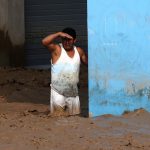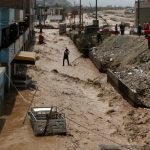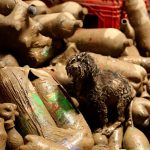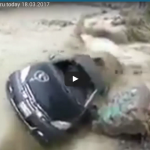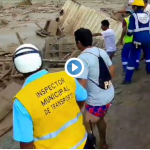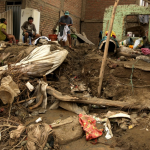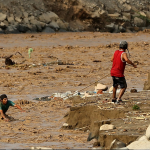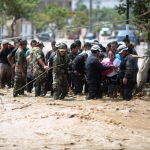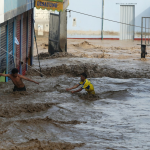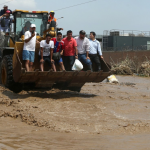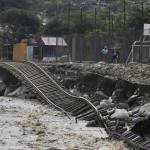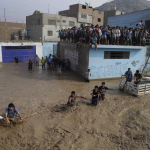Flooding in Peru
 Devastating photos of the El Niño-driven flooding that has killed more than 70 people in Peru
Devastating photos of the El Niño-driven flooding that has killed more than 70 people in Peru
By Christopher Woody From Business Insider
Peru El Nino Lima flooding damage destruction
The rapid and unusual warming of the waters off northern Peru has unleashed the deadliest rainfall the South American country has seen in decades.
Significant amounts of rain have fallen over relatively short periods of time in some parts of the Andean country in the latest iteration of a local El Niño, sending flash floods raging through city streets and across dry floodplains where people had built makeshift homes.
The downpours have overwhelmed riverbanks and caused mudslides.
“We’ve never seen anything like this before,” said Jorge Chavez, a general in charge of organizing the government’s response, according to Reuters.
“From one moment to the next, sea temperatures rose and winds that keep precipitation from reaching land subsided,” Chavez said.
About half the country has been placed under a state of emergency to allow aid to get to the hardest-hit areas first, and in some areas on Peru’s northern coast, small villages have been completely isolated by the deluge.
Intense rains and mudslides over the last week have wrought havoc around country and caught residents in Lima, a desert city of 10 million where it almost never rains, by surprise.
In recent days, residents of Lima have become stranded as streets are suddenly flooded by rainwater. People on the outskirts of the city have awoken to find their homes flooded.
A woman is assisted while crossing a flooded street after the Huaycoloro river overflowed its banks sending torrents of mud and water rushing through the streets in Huachipa, Peru, March 17, 2017.REUTERS/Guadalupe Pardo
Source: AFP
Periodic warming of waters in the Pacific Ocean causes increased evaporation and saddles clouds with immense loads of water, which then fall on coastal areas, causing rivers to overflow and avalanches from steep hillsides. A lack of wind keeps the clouds in place and prolongs the rain. Intense downpours have sent torrents of water and mud whipping through city streets, sweeping away homes, furniture, and sometimes people.
A woman gets rescued after a massive landslide and flood in the Huachipa district of Lima, Peru, March 17, 2017.REUTERS/Guadalupe Pardo
Source: AFP, El Tiempo
Since January, when the rainy season typically reaches its height, at least 75 people have been killed and about 100,000 have lost everything. Another 630,000 people have suffered damages. The country is braced for another month of floods before the rainy season winds down.
People try to cross the Rimac River after rivers breached their banks due to torrential rains, causing flooding and widespread destruction, in Huachipa, Lima, Peru, March 19, 2017.REUTERS/Mariana Bazo
Source: El Tiempo, Reuters
A woman swept away by muddy flood waters emerges from a pool of debris, which livestock have also become stuck in.
In Lima, classes have been canceled and water service was suspended after treatment systems were clogged, sparking shortages of bottled water at stores as people rushed to stock up.
A man gets rescued after a massive landslide and flood in the Huachipa district of Lima, Peru, March 17, 2017.REUTERS/Guadalupe Pardo
Source: Reuters
Footage shows people stuck in a car and bus caught up in the inundation.
“There’s no electricity, no drinking water … no transit because streets are flooded,” Valentin Fernandez, mayor of Nuevo Chimbote, a coastal town north of Lima, told Reuters.
A man stands in a flooded street after a massive landslide and flood in the Huachipa district of Lima, Peru March 17, 2017.REUTERS/Guadalupe Pard
Source: Reuters
Over the weekend, floodwaters surged into Trujillo, the country’s third-largest city, leaving people clinging to each other for safety. “Huaycos,” what Peruvians call powerful avalanches of mud and stone coming down from Andean hillsides after heavy rains, continued to do damage.
A group of people, stranded in flood waters, hold onto a rope as they walk to safety in Lima, Peru, March 17, 2017.(AP Photo/Martin Mejia)
Source: AFP
“We are confronting a serious climatic problem,” President Pedro Pablo Kuczynski said in a statement broadcast live Friday afternoon. “There hasn’t been an incident of this strength along the coast of Peru since 1998.”
A loader carries residents after a massive landslide and flood in the Huachipa district of Lima, Peru, March 17, 2017.REUTERS/Guadalupe Pardo
Source: Associated Press
Disorderly construction in some areas has pushed homes into areas vulnerable to flooding. Kuczynski also declared Peru’s Central Highway in a state of emergency on Friday and announced he would be boosting funds for reconstruction.
A man walks through a flooded street after the Huaycoloro river overflowed its banks, sending torrents of mud and water rushing through the streets in Huachipa, Peru, March 17, 2017.REUTERS/Guadalupe Pardo
Sources: El Tiempo, Associated Press
The president said he was optimistic that the country was in a good position to make a quick recovery, but he urged Peruvians to be cautious. “This hasn’t ended,” he warned. “And it will continue for some time more.”
A man tries to help his neighbor to cross a flooded street after the Huaycoloro river overflowed its banks, sending torrents of mud and water rushing through the streets in Huachipa, Peru, March 17, 2017.REUTERS/Guadalupe Pardo
Source: Associated Press
The intense rains and flooding come as Kuczynski, like many of his counterparts in the region, is experiencing the legal and political fallout of corruption investigations into Brazilian construction company Odebrecht’s dealings around Latin America.
Police help residents cross a flooded street after a massive landslide and flood in the Huachipa district of Lima, Peru, March 17, 2017.REUTERS/Sebastian Castaneda
Source: Reuters
A poll taken March 15-17 found his approval had fallen 6 percentage points to 32%. The poll didn’t assess how Peruvians viewed Kuczynski’s handling of the rains and flooding, but a majority did not feel that public safety, the economy, or the fight against corruption have improved during Kuczynski’s 8-month-old centrist government.
Residents stand near a destroyed home in Cajamarquilla, Lima, Peru, March 18, 2017.REUTERS/Mariana Bazo
Source: Reuters
Kuczynski’s approval rating has dropped by half from a of 63% in September. But legislators from across Peru’s political landscape have pledged to avoid clashes with the executive so the government can focus on emergency efforts.
Residents walk on a flooded street in Huachipa, Lima, Peru, March 20, 2017.REUTERS/Mariana Bazo
Source: Reuters
Chavez, the general handling Peru’s response to the disaster, said the country needed to rethink its infrastructure to prepare for the possible “tropicalization” of the northern desert coast, which some climate models have predicted as temperatures rise.
Train tracks lay destroyed in a flooded river in the Chosica district of Lima, Peru, March 19, 2017.(AP Photo/Martin Mejia)
Source: Reuters
“We need more and better bridges, we need highways and cities with drainage systems,” Chavez said, according to Reuters. “We can’t count on nature being predictable.”
A dog stands among the debris of a destroyed home in Huachipa, Lima, Peru, March 19, 2017.REUTERS/Mariana Bazo
Source: Reuters

